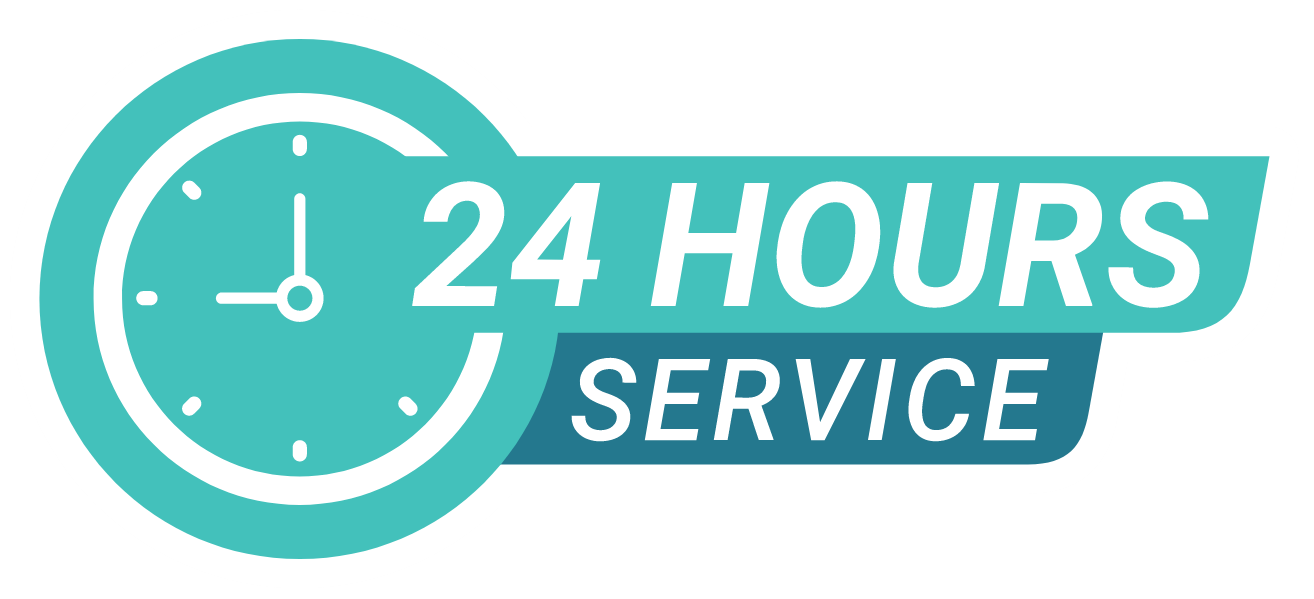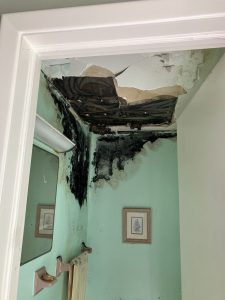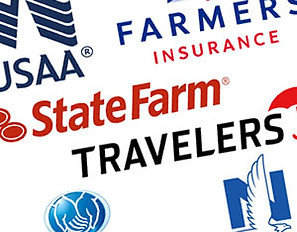With warmer weather comes hidden disasters. Keeping up with seasonal maintenance is not only important for your home and property, it is necessary to maintain the safety and health of its occupants. Tri State Restorations wants to help prevent disasters whenever possible, follow the helpful tips in this guide to ensure you are prepared for any water disaster. And, if disaster does strike, know that we’ll be there for you! Tri State Restorations is a 24-hour emergency services company, we’re always ready when disaster strikes.
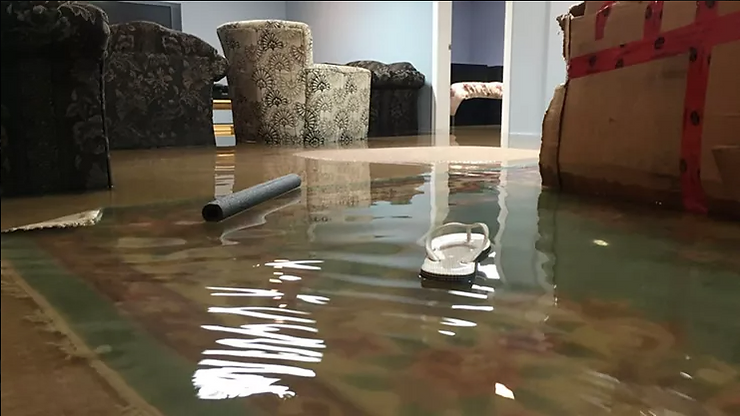
This guide will review the most common hidden dangers that come with warmer weather and provide you with tips and suggestions for preventing and dealing with disasters like mold, flooding and water damage.
The Hidden Dangers of Heavy Rain and Flooding
Floods and heavy rains are best known for the extensive water damage they cause to properties, but they can also cause sewage from sanitary sewer lines to backup into your property through drain pipes. These backups create extreme health hazards and cause damage that is difficult and expensive to repair.
Did You Know? Water is one of the most common causes of damage in homes and represents one of the largest percentages of insurance claims. Water damage to your property can happen from a number of different sources including plumbing and appliances, severe weather like heavy rainfall and flooding, accidents or improperly insulated openings like windows or doors.
The Good News: If water damage is sudden there is a good chance you may be covered by your existing homeowners or condo insurance policy. Check your insurance policy annually to determine if you’re covered for water damages.
There are several potential sources of sewer and water systems backup disasters:
- Overflow or backup of property drainage systems Gutter and rainwater pipes can cause a sudden backup into your home when overwhelmed by debris or major rainfall.
- Blockage of a city sanitary main If the city main gets blocked, it may cause water to backup into your home.
- Aging sewer lines This requires updates or repair.
- Tree roots When you have older pipes, sewer lines and water entry pipes, tree roots can find their way into the pipes and cause blockages.
- City-related pipeline issues If the water system you are using combines sewage and storm water into one pipeline it can easily become overwhelmed during a storm and backup into your home.
Prevent Damage by Diverting Rainwater
Here are a few different drainage options that can help protect your property from damages caused by improper water diversion:
- Conduct a percolation test to determine if surrounding soil has adequate drainage.
- Installation of a French drain, catch basin, sump pump or leaching drywells can help divert large amounts of rainwater away from your property.
- Adding gravel or mulch to lighter problem areas that often retain water
- Adding rock and stone paths along downspouts to ensure rainwater flows away from foundation • Adding a rain barrel to store runoff can reduce the amount of water you have to drain away.
- Adding a ‘rain garden’ or landscaping with wetland plants can assist with natural soil drainage.
- Soil grade property perimeter. By sloping the dirt, gravel or sand surrounding your foundation away from the structure, you prevent water from pooling next to the foundation.
What Can I Do If I Find Water Damage?
Quick action is required when visible leaks or standing water is present in your home. Prolonged action can cause secondary damages to your property from mold and bacteria and is a severe health risk. Water disasters are unforgiving and extensive property damage can begin within mere hours of an incident.
Follow these easy steps to ensure you’re limiting the damage caused until a restoration expert can intervene:
- ✔ Contact a restoration specialist immediately to prevent additional issues that could arise from a resolved plumbing leak or rainwater and flood disasters.
- ✔ Remove as much water as possible by mopping and blotting
- ✔ Remove wet area rugs or other floor coverings – do not attempt to start removing your wall-to-wall carpet.
- ✔ Life draperies off of the floor
- ✔ Wipe down furniture and prop up wet furniture cushions for even drying.
- ✔ Place aluminum foil or plastic bags under furniture legs.
- ✔ Move photos, paintings or other wall hangings to a safe, dry location
- ✔ Open drawers, closets and cabinet doors to enhance drying
Do Not:
- Enter a room with standing water until the electricity has been turned off
- Use a regular household vacuum to remove water
- Lift tacked-down carpet without professional help
- Use electrical appliances while on wet carpet or flooring
- Do not remove books from shelves, instead pack them in tightly to prevent warping of pages until a restoration professional can begin a specialized drying process.
- Disturb visible mold
- Wait for large amounts of standing water to dry on their own – you may be causing additional structural damage that could have been prevented.
- Hesitate to contact a plumber to stop the source of the water or sewage from a broken pipe or plumbing issue.
Warm Weather + Mold = Perfect Storm!
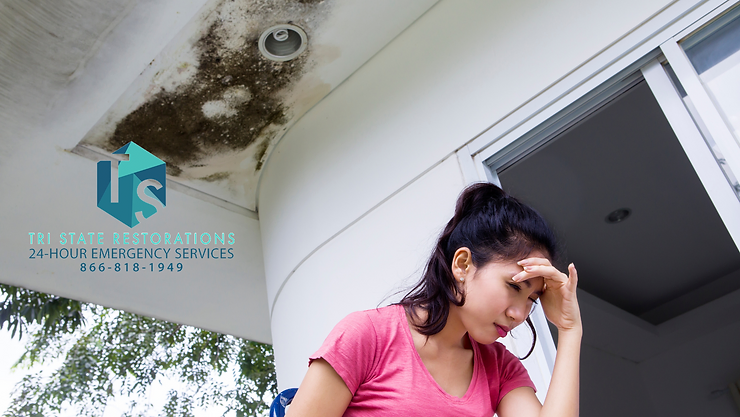
Why is mold most apparent during the spring and summer months? Mold is caused by warm and humid conditions and is likely to grow and become a problem where there is indoor moisture and dampness, flooding, leaky roofs, improper ventilation, leaking appliances, high humidity, improper landscaping grading, or most commonly, indoor plumbing issues. Because of the warmer weather and heavy amount of rainfall, springtime creates the ‘perfect storm’ scenario for mold growth.
Common types of mold include:
- Penicillum
- Stachybotrys
- Trichoderma
- S. chartarum
- S. chlorohalonata (commonly known as “Toxic Black Mold”
Mold Facts:
- 100% of all types of mold have the potential to cause some health effects (EPA)
- 8 symptoms of mold allergy: sneezing, itchy & watery eyes, runny nose, nasal congestion, itchy nose, mouth and lips, respiratory issues.
- 93% of chronic sinus infections have been attributed to mold (Mayo Clinic)
- 70% of homes are estimated to have mold behind walls (Harvard EDU)
- 100,000 different types and species of mold.
- 30% of brand new homes built have mold (CNN)
Assessing the Damage: When to Seek Help From a Licensed Mitigation & Damage Restoration Professional for Your Disaster
Seek a licensed mitigation and damage restoration professional like Tri State Restorations for help with your property damage/loss if:
- You have visible mold or suspect an occurrence of mold based on the warning signs listed above.
- You have standing water or visible water leakage from a recent rainfall or flood.
- You have consulted a plumber and resolved the initial crisis from a plumbing issue, but still need property restoration and/or mold testing and remediation services for damaged areas.
- You have property damage from recent sewage backup
- You need water extraction and structural drying services
How Can Tri State Restorations Help?
Tri State Restorations is available 24-hours a day and ready to assist you with your disaster. Our experts are also available to answer questions or concerns you may have related to mold or water damage. Contact our 24-hour emergency line at 866-818-1949 and speak with a live representative who is trained to handle your disaster today!
TSR is a licensed, insured and bonded professional remediation firm. Our specialty trained Institute of Inspection, Cleaning and Restoration Certification (IICRC)-certified technicians are on call 24 hours a day, 7 days a week, to provide you with a complete range of emergency water restoration services when you need them. Tri State Restorations works to always provide clients peace of mind by using clear and transparent communication methods and professional services you can count on.
Tri State Restorations Water Mitigation and Damage Restoration:
- Damage Assessment After an emergency, an immediate and thorough assessment must be performed to determine the extent of the damage so that repair and restoration of your property can begin quickly and safely.
- Water Extraction Water needs to be quickly and properly removed from damaged areas to prevent additional damage caused by bacteria or mold growth.
- Structural Drying Drywall and other building materials can absorb a significant amount of water. We have the training and equipment required to reduce the moisture levels in your home and will help you to restore your property affected by water damage.
Tri State Restorations Mold Remediation:
Tri State Restoration’s certified technicians perform state-of-the-art inspections utilizing infrared technology to determine specific levels of mold content. Our certified mold remediation experts arrive onsite to provide a full inspection of the damage in your home or facility, then provide you with an action plan leading to a simple and efficient mold removal process, and include recommendations to prevent future intrusions.
- What is Mold Testing? Mold testing is a great way to find out if there is a greater mold related health hazard in any interior space. Tri State Restorations will work with you to determine if remediation needs to be done.
- How do I know the mold is gone? Air quality checks are performed before and after the work is complete, providing you with peace of mind that the hazard has properly been removed.
Additional Water Damage & Property Maintenance FAQs:
Does my property insurance cover all aspects of water damage?
Several insurance plans do not automatically include public wastewater and sewage backup endorsements, leaving you responsible when a disaster hits. Check your insurance policy to see if this additional coverage has been added or is available. It is important that you read your policy and review with your agent annually. Tri State Restorations works with all insurance types and companies. If you are unsure of coverage, give us a call! We’ll help walk you through the process.
Are the public access points around your property properly maintained?
When public areas like sidewalks are improperly maintained, the cracks or faulty drainage in these areas could lead to big problems for you and your property. Contact your local utility or public works authority with any concerns.
Does my yard slope towards the property?
You may be at risk of improper water flow which could lead to standing water, foundation damage and leaks. Check to be sure water is flowing away from your property during a heavy rain and grade your home with soil and create at least a 6 inch downward slope away from your home.
Are there tree roots obstructing the drainage path or foundation?
Check large tree roots in close proximity to your property. Consider tree removal for problem areas.
Sharing is caring!



